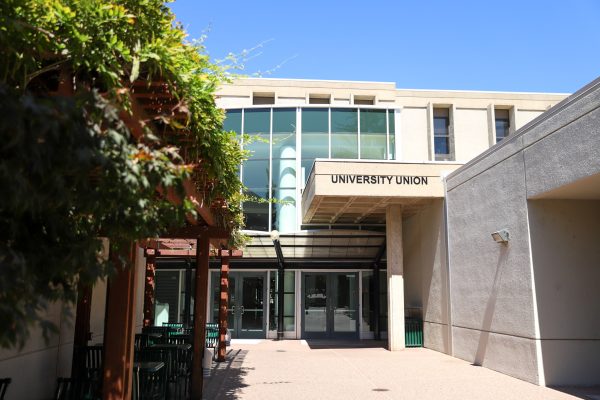Sacramento State to host 2014 USA Track and Field championships
November 13, 2013
Sacramento State Athletics has once again struck a landmark deal to upgrade its facilities with outside financing, this time by partnering with the Sacramento Sports Commission.
The project will resurface the track at Hornet Stadium in preparation for the 2014 USA Outdoor Track and Field Championships.
The resurfacing is expected to be complete by the end of spring, in time for the three-day event beginning June 26.
This is the second time the athletics department has drawn in money from outside the university to help upgrade Hornet Stadium in the past three years. In 2010, the now failed United Football League franchise Sacramento Mountain Lions paid for a third of the $1.1 million upgrade project to change the football field from natural grass to artificial turf.
The cost for refurbishing the track will be $1.2 million, but Sacramento Sports Commission, a division of the Sacramento Convention and Visitors Bureau, will pay for the project at no cost to the university.
“This is, we hope, just the beginning of a relationship with [the Sacramento Sports Commission],” said Sac State Athletics Director Terry Wanless. “It’s a significant thing at this point because of the events that we are talking about partnering with them in the future and it’s something that would be very good for the community, the city of Sacramento and Sacramento State.”
Wanless said having a world-class track on campus, which could arguably be the best in America, will make Sac State a primary destination for not only the 2014 event, but possibly the 2017 USA Outdoor Track and Field Championships, Junior Olympics track meets and the 2020 Olympic trials.
Mike Sophia, director of the Sacramento Sports Commission, said while there have not been other plans openly discussed to make additional upgrades now, it has not been ruled out as more events become a reality.
“Part of the long-term vision will be what happens to the facility,” Sophia said. “Certainly enhancing it as a national track and field destination is something that’s important for the community to be able to grow what we are doing and to have that 2020 (Olympic trials) vision.”
Sophia said it costs about $500,000 to host events like track and field, however, the 2014 USA Outdoor Track and Field Championships meet is projected to draw 1,000 athletes, more than 100 international media outlets and draw 5,000 to 15,000 fans each day.
Hornet Stadium has successfully hosted Olympic trials in the past. In 2000, the eight-day meet at Sac State set a record for trial attendance when 187,104 fans passed through the gates. In 2004, 172,230 people attended another trials meet, which stands as the third-highest total ever.
“Sacramento has a tremendous track & field culture and we are very pleased to be returning in 2014,” said USA Track and Field CEO Max Siegel in a press release. “The fan support in the region is fantastic, and the weather conditions serve sprinters, field event athletes and distance runners alike.”
Wanless said there is not yet a plan for revenue sharing when the university hosts events at the stadium, but benefits still remain.
“We first and foremost get a brand new track and we always have to understand that part of it.” Wanless said. “That is a significant contribution they are making for our facility. As we look to the future and if there are positive revenues left at the events, there will be a discussion on how that revenue may be divided. Even if there isn’t any per-meet revenue, what we received just in our track is huge.”
Wanless said the track will be an additional selling point for Sac State track and field coaches and it will enhance their ability to attract student athletes.
Wanless said the athletics department feels fortunate to have received the help and it will continue to use community support to provide high level athletics facilities.
“I think it’s been monumental in terms of our ability to partner with entities within the community to help us upgrade our athletic facilities,” Wanless said. “It’s obviously been the difference maker between being able to do these projects and not being able to do them.
“We are very fortunate to have a community that is very sensitive to the campus and wants to have a partnership to make these things become a reality.”








































































































































